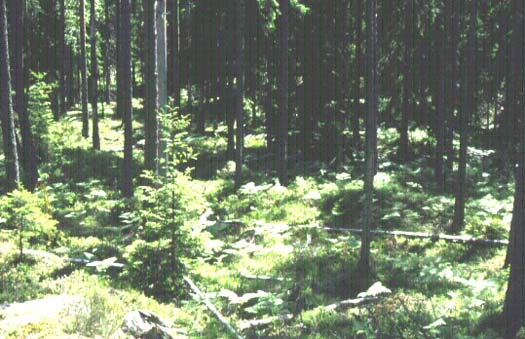

Vegetation structure and species cover |
| Aim follow the dynamics of species content, structure and species populations of the major plant communities of the site Data from this subprogram constitutes a basis for description of the species, structure and community diversity of the site and its dynamics. The structure and dominance relations of all layers are relevant with respect to interception of precipitation and circulation of nutrients. The programme also gives data for estimating the biomass of the understorey vegetation. Observations are performed initially and after major changes have occurred, e.g. fire, extensive windthrow or succession following human action. They are performed on circular plots of 5,64 m radius, i.e. an area of 100 m2 such as the vegetation plots of the Swedish National Forest Survey. On the plots are noted trees, shrubs, other vascular plnats, mosses and lichens in four layers, namely tree layer (trees >5 m), shrub layer (trees 1-5 m, shrubs > 1m), field layer (trees and shrubs < 1 m, other vascular plants) and bottom layer (bryophytes and lichens).
Variables |
 |
| On a 100 m2 circular plot cover of all species and layers – tree, shrub, field and bottom layers – is estimated. (Tiveden.) (See also figure under Tree biomass and tree indication!) |